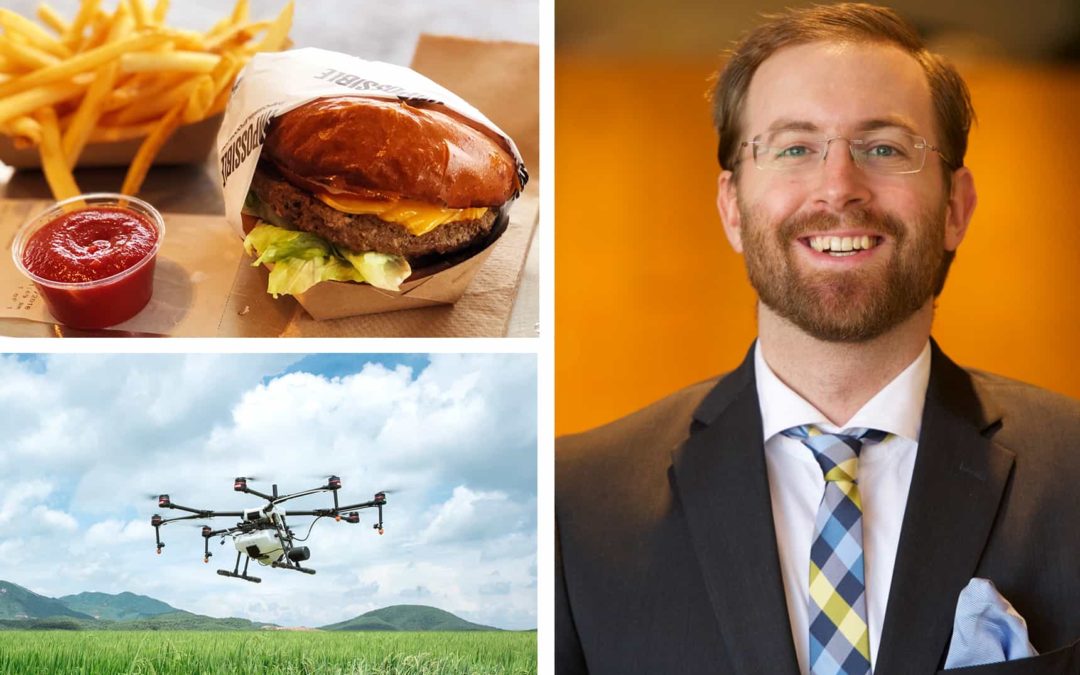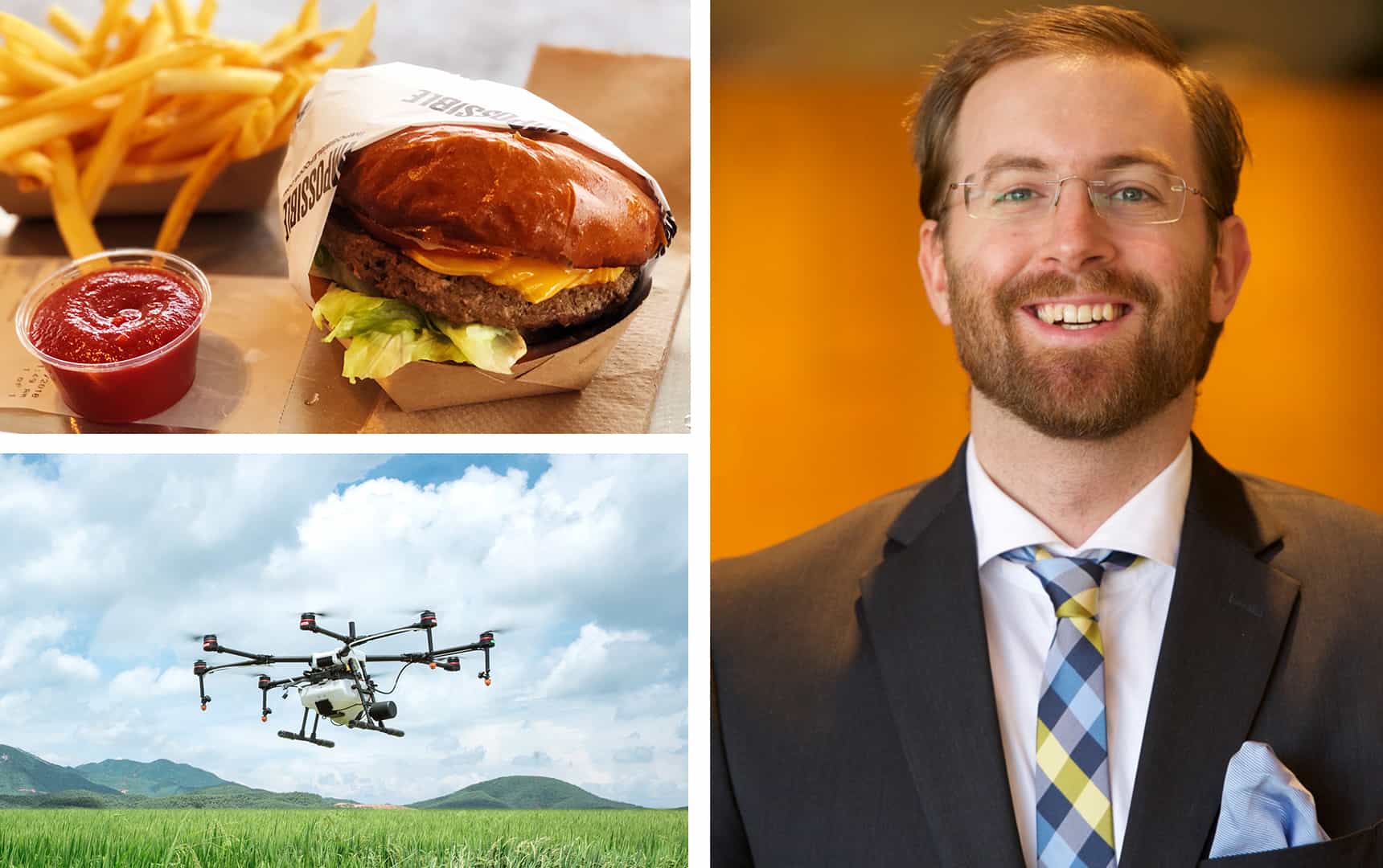
We humans have always used technology. Even in the oldest fossils ever found of homo sapiens, dating to 315,000 years ago, various forms of tools have been found. So, we have always used methods to reduce the need for physical or mental strain and thus be able to increase our standard of living. Technology defines us.
Among the earliest finds are stone axes and spearheads, so from the very beginning there was a strong connection between technology and food. Since the agricultural revolution about 12,000 years ago, the development of our “food technology” has increased dramatically: from irrigation systems, shovels and rakes to combine harvesters and milking machines.
Food in completely new ways
The technology we use in our food production is becoming increasingly advanced. So advanced that we are now entering a new paradigm. Now, in the 21st century, we have therefore also begun to use a new word to describe this technique.
– FoodTech is a term that describes the tech companies and the innovation that makes it possible for us to produce, distribute and consume food in completely new ways, says Daniel Skavén Ruben, Warp News Expert within FoodTech.
Daniel describes FoodTech as an umbrella term, it is very wide and can be broken down into several parts.
– AgTech is about technology closely linked to agriculture and how we grow. It can be drones and sensors, software solutions and vertical cultivation. Food science is another part that is about developing new products that meet a need. It can be about environmental effects, health effects or animal welfare.
Food science is primarily driven by the fact that we as consumers demand food in new ways, new ingredients or new products. One example is Impossible Burger , a vegan burger with a meat-like texture that contains the substance heme.
Heme is a molecule that is essential for life and is found in all living things. In animals and humans heme is found in hemoglobin, myoglobin and other proteins. Impossible Foods uses heme from leghemoglobin found in soy. This way, they do not have to use animals to get the meat taste that humans are used to from animal meat.
It is thus a plant-based burger that “bleeds” and many who do a blind test can not taste or feel the difference between it and a regular meat burger.
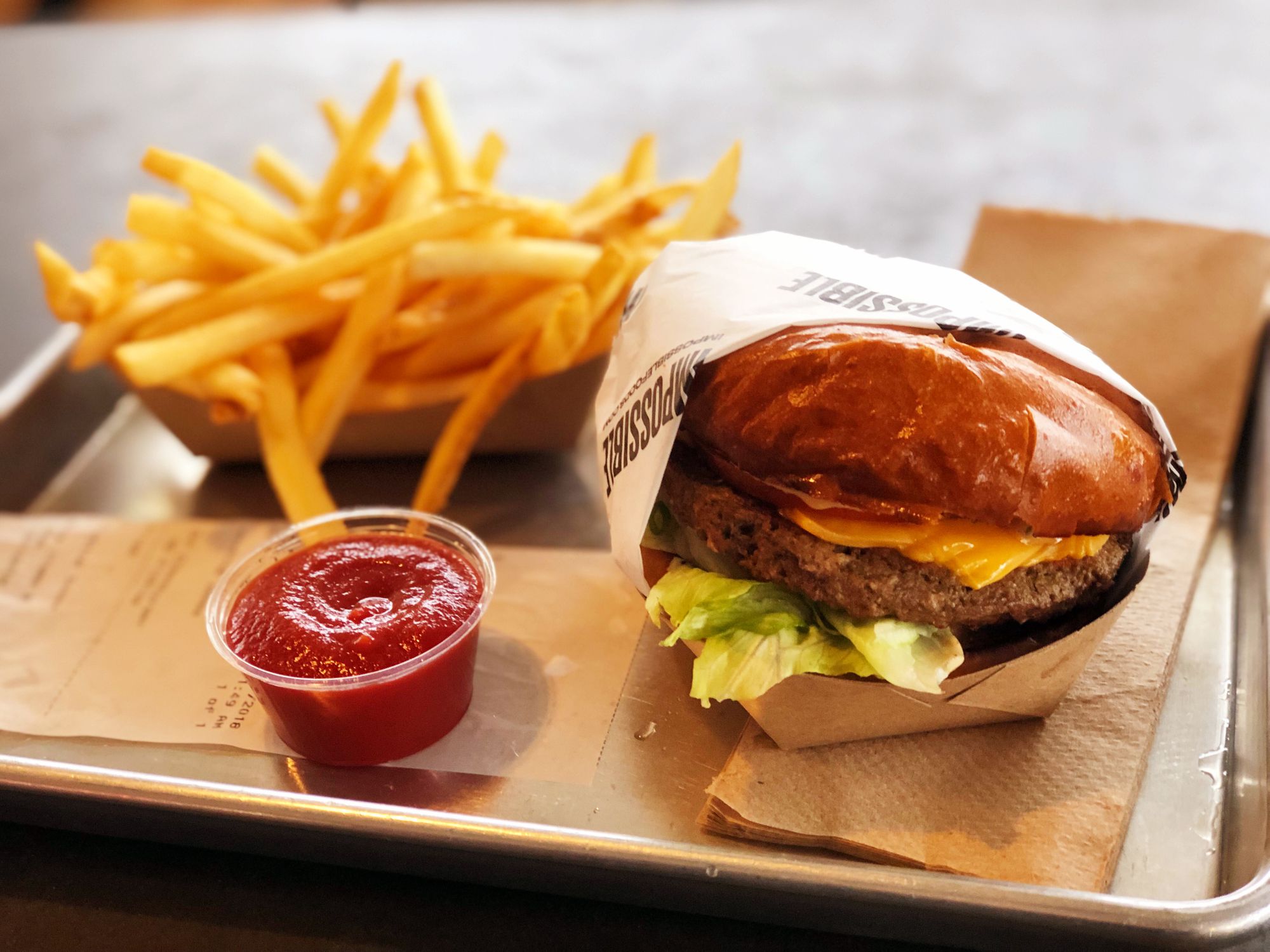
– In Food science, we also include the understanding of how food affects us. This can be, for example, sensors that are swallowed or to breathe on a so-called breathalyzer. It can also be personalized nutrition and food as medicine. We know broadly how food affects us at the population level, but how does your intestinal flora work, how should you eat and how does this change in different phases of life? This is also food science, the understanding of how we are affected by food.
Is a Swedish broccoli as nutritious as a French one?
Daniel Skavén Ruben says that there are about 26,000 biochemicals in food. An ordinary broccoli contains about 1500. Today we can map human DNA for a historically low cost and there is plenty of human DNA mapped. But we do not have the same data on food at all.
– There are still a lot of guesses. There are now projects underway that map up DNA in food, so we can, for example, find out if a broccoli in Sweden is as nutricious as one in France. We can also get exact information on how it is affected during cooking. What happens if I fry it instead of boil it?
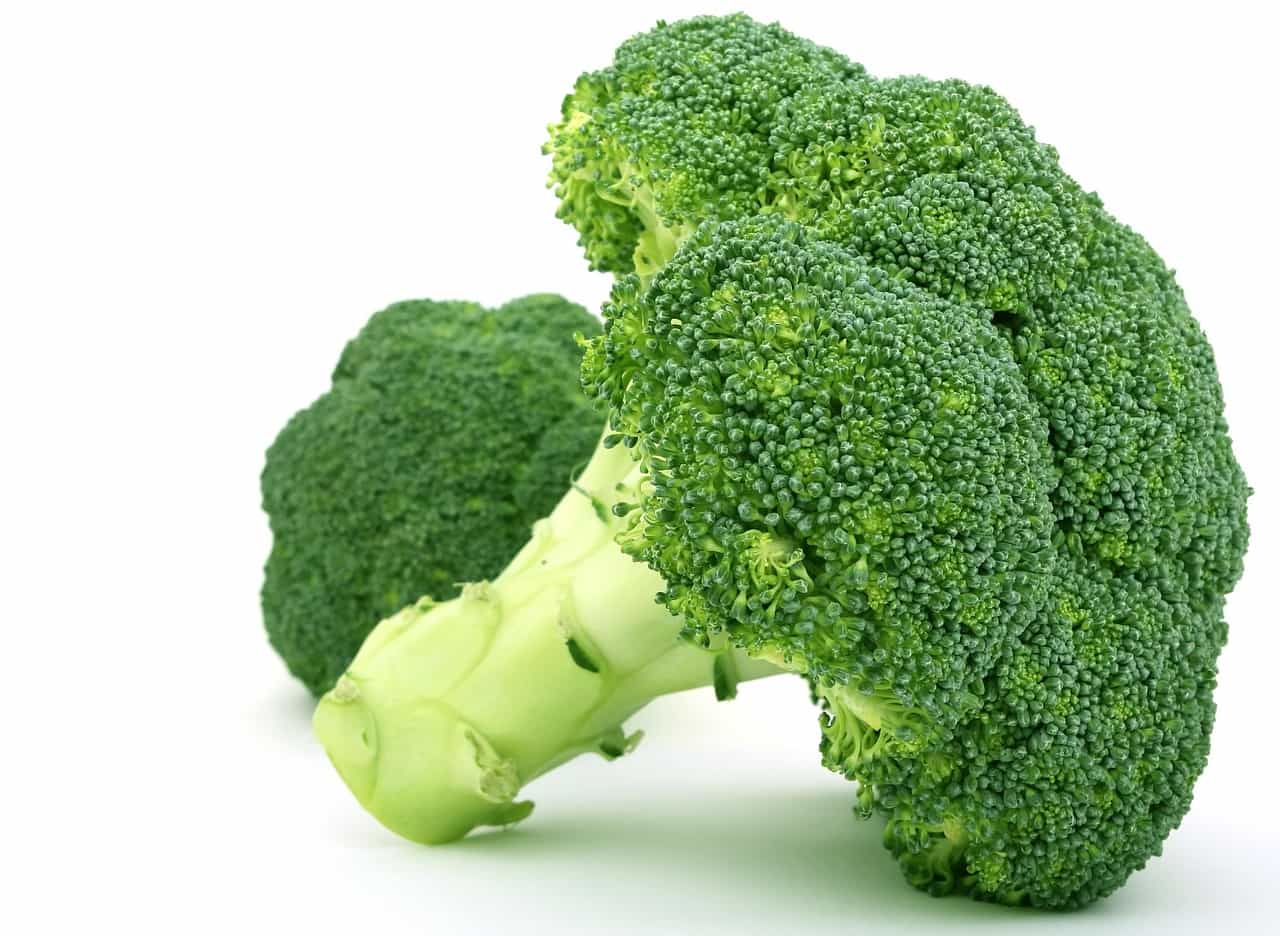
Another part included in FoodTech is about how food is distributed and sold. This is everything from payment services and delivery platforms to robots that cook and distribute food.
– Something that has received a lot of interest is so-called cloud kitchens, also called ghost kitchens. It is a kind of commercial kitchen production of food that in apps like Foodora and Uber Eats is marketed to consumers as different restaurants, it can be Chinese, Mexican, Japanese, Italian and so on, but where the food is prepared in the same commercial kitchen.
So imagine a co-working space for food without seating, where the kitchens only deliver to various app-based food services.
Get recipes based on what you already have at home
But FoodTech as a term actually holds even more. Another part is about food coaching or recipe services.
– A service that is very interesting is Danish Plant Jammer. It is an app that you use to inventory all the ingredients you have at home. Based on what you have in stock, you will then receive recipes that you can cook.
So it turns on the whole recipe thinking upside down. Normally, you start with a recipe and then, most often, need to buy ingredients. Plant Jammer starts at the other end, based on what you have, you get suitable recipes to cook. Other examples of apps are Karma and Too Good to Go where the purpose is to reduce food waste.
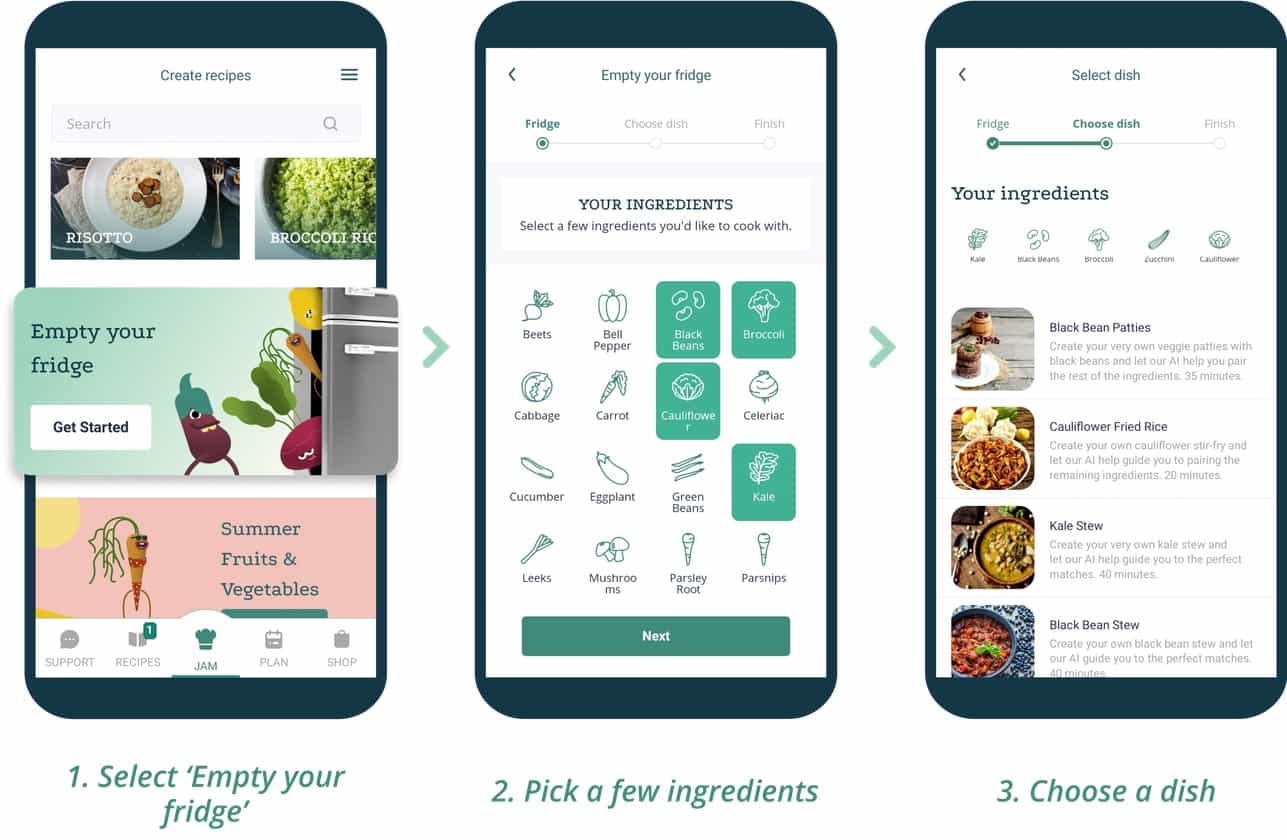
More changes in 10-20 years than in the last 10,000 years
The FoodTech area is enormous and developing very fast.
– We see more changes in the next 10-20 years than in the last 10,000 years, exclaims Daniel Skavén Ruben.
But why is so much happening right now?
– It is a combination of different things. Food is the area and industry that affects our health the most and the most important risk factors for disease and premature death are diet-related, such as cardiovascular disease, diabetes, high BMI and high blood pressure.
Animal welfare is another important factor and the fact that the industry is so huge. If we look at food production as a whole, it is the industry that has the most employees in the whole world, around one billion people. At the same time, it is the least digitized, says Daniel. So there is very low hanging fruit, relatively simple measures that give great effect.
– Many technologies developed for other industries are now being adapted for agriculture, such as genetic modification and synthetic biology. If we can grow organs, then we can grow steaks, right? We are also seeing a sharp increase in the use of AI, drones and sensors.
Daniel believes that many investors are now opening their eyes to this, that it is generally a rather inefficient industry, which means that there are great opportunities.
– In many poorer countries, we can take Nigeria as an example, 30-40 percent of the food does not reach consumers. Then it is strange to talk about increasing productivity when so much food rots or becomes bad. In richer countries, 30 percent of the food we grow is thrown away.
How can we digitize this industry?
There are more and more people who see that there are huge problems and that technology can help solve them. The question is, how can we digitize this industry? Many efficiencies from other industries have not reached here.
– Even though it is a gigantic industry globally, agriculture is so small in our part of the world. Only a few percent of the western world’s population works with this. Maybe that’s why it also has flewn a bit under the radar. But now we notice that there is an increasing interest. There is so much we can solve!
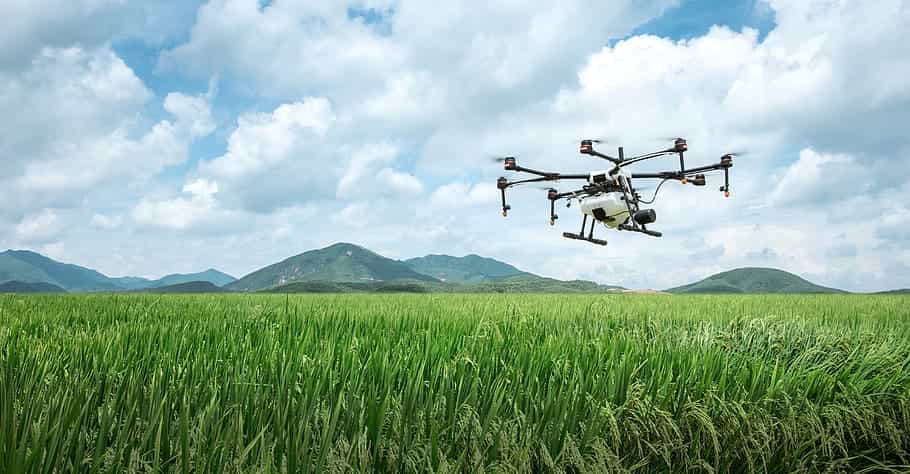
All in all, it is a combination of new technology and innovation from other industries, entrepreneurs and investors that has created the increasing interest in FoodTech.
– With that said, this is a special niche. AgTech and FoodTech are complicated and difficult to get into without expertise. One example is Aqua culture. 20 percent of our global protein intake comes from marine farms, despite that, only a handful invest in this. It is high risk and a relatively new industry. There are opportunities but it requires some knowledge.
There is also an emotional aspect that needs to be taken into account. Food can be polarizing and personal in a way that few other areas are. Many other industries can change quite quickly, as a rule people, for example, are not as emotionally attached to a petrol engine. But food is more than just fuel for our bodies. It is joy, comfort, community and tradition.
– The way we produce food is surrounded by a lot of emotions. If someone wants to change it, like oat milk or Impossible Burger, it is therefore sensitive for many. That is why it is important to have respect and a nuanced discussion. There are such incredible benefits to much of what is happening in FoodTech right now. Technology is evolving very fast, but we need to find good ways to reach people and change their habits.
“Always been interested in technology and innovation”
So how come Daniel became so interested in this area?
– I have always been interested in technology and innovation. Previously, I have worked for the Danish Export Council with how technology and innovation can drive the world in a better direction and 5-6 years ago I opened my eyes to food and agriculture.

Daniel thinks it’s so interesting because it’s so fundamental to us humans.
– It covers everything from ecosystems and the environment to health. Then it is interesting that food production and agriculture is the least digitized and inefficient industry according to McKinsey. There is a lot to do here.
FoodTech is definitely an area to get involved in if you are curious and have hope of driving the world in a better direction. The area is changing very fast now, how we produce, process, distribute and consume food.
– It is an exciting time to be part of all this and a way to be part of and improve the world a little. We can do things a lot more effective and contribute to people living longer, feeling better and that the environment and animals are less harmed, concludes Daniel Skavén Ruben.
About Daniel Skavén Ruben – Warp News Expert within FoodTech
Daniel Skaven Ruben is a consultant to The Rockefeller Foundation Food Initiative, supporting the Foundation’s work to advance a more nourishing and sustainable food system.
He previously was part of the process of refreshing the Foundation’s food and agriculture strategy, focusing in particular on leveraging innovative breakthroughs in science and technology. Prior to this role, Daniel worked as an expert for the World Bank in Washington D.C. on issues around technology, innovation, and entrepreneurship.
He also served in the Ministry of Foreign Affairs of Denmark in various roles in Stockholm and New York for more than half a decade, helping Danish tech companies to internationalize. Daniel is a mentor for several FoodTech accelerators and is an advisor to a number of AgTech and FoodTech startups.
This is FoodTech – according to Daniel Skavén Ruben
FoodTech is a gigantic. Here is Daniel Skavén Ruben’s list of all FoodTech areas.
Primary production
- Macroalgae/microalgae
- Novel animal feed (insects, algae, single-cell protein)
- Plant-based protein
- Mixed plant-based-animal based
- Fungus
- New/ancient crops (quinoa, millet, buckewheat, lupini, etc)
On-farm
- Aquaculture (open-ocean, integrated, land-based)
- Hydroponics
- Aquaponics
- Perennial farming
- Greenhouses / vertical farming
- Intercropping
- Agroforestry
- Urban forestry
- Feed additives inhibiting methane production
- Climate resistant crops
- Soil microbiome
- Crowdsourced information between farmers
- Precision agriculture (Big Data, AI, machine learning, sensors, satellite imagery, drones)
- Ecological biocontrol
- Robots / automation
- Innovative fishing nets
- Sustainable fishing vessels (electric etc)
- Digitalization
- Early warning systems (weather, plant disease, etc)
Outside farm
- 3D-printed food
- Cultured meat / fish
- Precision fermentation
- Gene editing (CRISPR)
- Food waste nutrient extraction
- Selective breeding
- Water desalination
- Soil additives
- Biochar
- Human waste recovery as fertilizer
Processing
- Probiotic foods
- Automated harvest and sorting
- Solar dryers
- Micro-scale ice cooling
- Modular factories
- Near-farm (or fishing port) mobile processing
Packing
- Edible films and coating
- Reusable packaging
- Edible packaging
- Biodegradable packaging
- Packaging made of waste streams
- Smart packaging (sensors etc)
- Ethylene absorption
Storage
- Smart refrigerators
- Mobile pre-cooling and packing
- Drying tech
- Cooling boxes
- Prevent post-harvest mold
- Sharing economy for harvesting and processing machinery
- Solar cooling
Distribution / logistics
- Blockchain
- Crowdfunded agriculture programs
- Mobile device market brokerage
- Last mile milk dispensing
- Reusable crates
- Edible RFID tags
- Uber-like produce delivery
- Predictive supply chain analytics
- Commercial drones
- Traceability
- Micro cold transport
Market (Retail)
- Upcycling food waste
- Online / on-demand / subscr. Shopping
- Secondary markets for food waste
Consumers
- Meal replacements
- Digital education on diets
- Increased food diversity acceptance
- Novel certifications
Magnus Aschan

